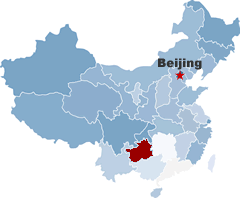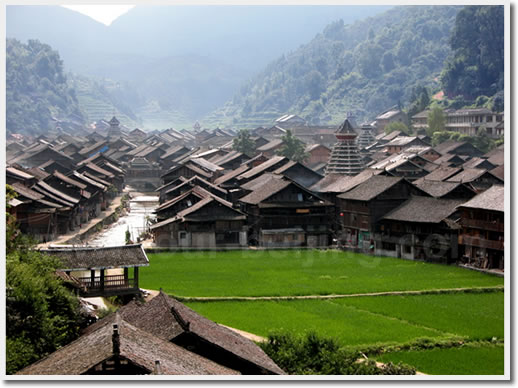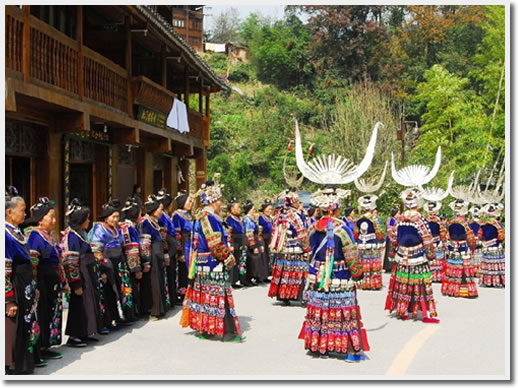Guizhou Travel Guide
 Location: Guizhou is situated on the eastern part of Yunnan-Guizhou Plateau in southwest China.
Location: Guizhou is situated on the eastern part of Yunnan-Guizhou Plateau in southwest China.
History: During the Jin Dynasty (265-420), Xinluo County was set up here, belonging to the territory of Jin'an Shire. The Tang Dynasty (618-907) established Tingzhou in this region which is the old name for Longyan.
Transportation: Southeast Guizhou region is relatively less developed but transportation in the area is not as harsh as recorded on many guidebooks. A comprehensive network of highway centered on Kaili-the capital city of the region has been built to connect almost every village in recent years. 2 of the best options to getting there is: a.) from North, Take a train to Kaili and change to coach to the mountainous villages; b.) from South, Take flights or train to Guilin, and then coach to these villages. On the way you can visit Longsheng, Sanjiang.
Dining: Bijie Dried Bean Curd, Bijie Rice Dumpling, Noodle with intestine, Stir-fried Buckwheat Rice, Chongchong Cake, Gaoba Cake
Nightlife: Guizhou is energetic and so are Guizhou people. Shopping malls and large marketplaces are usually closed at 22:00. People do not worry about their safety at deep night and many local people would like to spend their nights in snack halls.
Weather: Guizhou is in the subtropical zone and enjoys a moist monsoon climate. The annual temperature averages 15°C. Temperature in January (the coldest month) averaging 3°C~6°C and in July (the hottest month) 22°C~25°C. Most of the region do not have severe winter mostly because these big mountains and lush vegetation ward off the summer heat while winter in the region is rigid and the extra humidess makes the cold unbearable.
Attractions: More than 15 minority groups settled in Guizhou and most of the amazing scenic areas are located in these settled minority areas. In addition to enjoying the scenery, visitors can discover the rich and varied folk cultures of the different minorities. The strong but simple and unsophisticated customs, architectures with unique style, exotic and colorful costumes, and numerous festivals throughout the year, will make tourists feel everything is new and fresh. Zhaozing Dong Village--Zhaoxing Dong Village is one of the largest Dong villages in Guizhou. Known as No.1 Dong Village, Zhaoxing has over 800 households and more than 4,000 inhabitants. It lies in a basin surrounded by mountains and has one small river passing through. The serried stilted houses built on the hillside. They are all built of Chinese fir with blue tile roofs.

Basha Miao Village—Basha Miao Village is home to over 1,000 residents living in more than 400 houeholds. Basha Miao village is famed for being China 's last tribe of gunmen. This primitive miao village is hidden away in a forest and filled with stilted wooden houses by the river.

Kaili Museum--Kaili Museum is located in Downtown Kailim, it is actually a collection of Ethnic Minorities culture in Guizhou, where you can have a background knowledge of all minority native culture in this area.

Diping Wind and Rain Bridge—Wind and Rain Bridge is the symbolized archiecutre of the Dong minority people. The bridge is over 50 meters long and it's first built in 1894 during the Qing Dynasty over 100 years ago. However, the original structure was destroyed in a big fire in 1959 and the one visitors see today was a recreation finished in 1964.
Questions & Answers:




